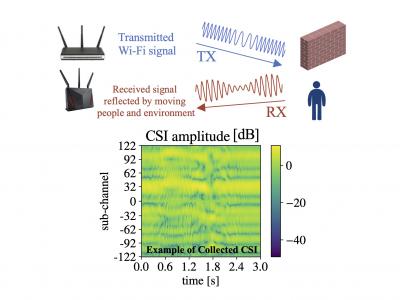Communications

Aiming the analytical modeling of Age of Information (AoI) and Peak-AoI, uploaded codes construct and solve analytical models for Non-preemptive Bufferless, Probabilistic Generate-at-will (GAW) and Random Arrival with Single Buffer (RA-SB) servers using the theory of absorbing Markov Chains. In particular, they output per-source PAoI/AoI distributions in a setting with general number of sources where the sources may have different (i) general phase-type service time distributions, (ii) packet error probabilities and (iii) arrival rates.
- Categories:
 284 Views
284 ViewsRecently, unmanned aerial vehicles (UAVs) have been receiving significant attention due to the wide range of potential application areas. To support UAV use cases with beyond visual line of sight (BVLOS) and autonomous flights, cellular networks can provide connectivity points to UAVs and provide remote control and payload communications. However, there are limited datasets to study the coverage of cellular technologies for UAV flights at different altitudes.
- Categories:
 566 Views
566 ViewsA monitoring data, which includes several OTDR traces incorporating various types of fiber events (e.g. reflective, non-reflective, merged events) induced along an optical fiber link, is provided. Different fiber faults such as fiber cut, and fiber bend are modeled using optical components such as connectors and variable optical attenuators (VOAs). The data can be used to train machine learning models for solving fiber fault diagnosis problems.
- Categories:
 596 Views
596 Views
This data is the Federal Communication Commission (FCC) F(50,50) signal strength variation curves for the Very High Frequency (VHF) Channel 7-13 and the Ultra High Frequency (UHF) Channel 14-69. The signal strength for both curves is in dBuV/m for an Effective Radiated Power (ERP) per dipole of 1 kW. All data are based on a 9 m mobile antenna height measurement for 30 m to 600 m antenna heights within a transmitter-receiver separation ranging from 1.5 km to 100 km.
- Categories:
 156 Views
156 ViewsThe monitored data is obtained using the optical time domain reflectometry (OTDR) principle, which is commonly used for troubleshooting fiber optic cables or links. The data set contains raw OTDR traces that include one or two reflective events caused by the placement of one or two reflectors and/or an open physical contact (PC) at the end of the monitored optical fiber link.
- Categories:
 958 Views
958 ViewsBeam management is a challenging task for millimeter wave (mmWave) and sub-terahertz communication systems, especially in scenarios with highly-mobile users. Leveraging external sensing modalities such as vision, LiDAR, radar, position, or a combination of them, to address this beam management challenge has recently attracted increasing interest from both academia and industry. This is mainly motivated by the dependency of the beam direction decision on the user location and the geometry of the surrounding environment---information that can be acquired from the sensory data.
- Categories:
 542 Views
542 ViewsThis dataset provides wireless measurements from two industrial testbeds: iV2V (industrial Vehicle-to-Vehicle) and iV2I+ (industrial Vehicular-to-Infrastructure plus sensor).
iV2V covers 10h of sidelink communication scenarios between 3 Automated Guided Vehicles (AGVs), while iV2I+ was conducted for around 16h at an industrial site where an autonomous cleaning robot is connected to a private cellular network.
- Categories:
 1456 Views
1456 ViewsThe complete description of the dataset can be found at: https://arxiv.org/abs/2305.03170
- Categories:
 5625 Views
5625 ViewsFuture mobile communication systems include millimeter wave (mmWave) frequency bands and high mobility scenarios. To learn how wave propagation and scattering effects change from classical sub 6 GHz to mmWave frequencies, measurements in both bands have to be conducted. We perform wireless channel measurements at 2.55 GHz and 25.5 GHz center frequency at velocites of 40 km/h and 100 km/h. To ensure a fair comparison between these two frequency bands, we perform repeatable measurements in a controlled environment.
- Categories:
 493 Views
493 ViewsSynthetic Digitally Modulated Signal Datasets for Automatic Modulation Classification contain CSPB.ML.2018 and CSPB.ML.2022, two high-quality communication signal datasets with eight modulation types: BPSK, QPSK, 8-PSK, pi/4-DQPSK, MSK, 16-QAM, 64-QAM, and 256-QAM. There are 14,000 signals of each modulation type in each dataset for a total of 112,000 signals per dataset. The two datasets are useful for signal processing testing, neural network (NN) training, initial NN testing, and out-of-distribution NN testing as signal generation parameters differ between the two datasets.
- Categories:
 1128 Views
1128 Views






